|
A.S.S.E.Psi.
web site (History of Psychiatry and Psychoanalytic Psychotherapy
)
A.S.S.E.Psi.NEWS
(to subscribe our monthly newsletter)
Ce.Psi.Di. (Centro
di Psicoterapia Dinamica "Mauro Mancia")
Maitres
à dispenser (Our reviews about psychoanalytic congresses)
Biblio
Reviews (Recensioni)
Congressi
ECM (in italian)
Events
(our congresses)
Tatiana Rosenthal
and ... other 'psycho-suiciders'
Thalassa.
Portolano of Psychoanalysis
PsychoWitz - Psychoanalysis and Humor (...per ridere un
po'!)
Giuseppe Leo's Art
Gallery
Spazio
Rosenthal (femininity and psychoanalysis)
Psicoanalisi
Europea Video
Channel
A.S.S.E.Psi. Video
Channel
Ultima uscita/New issue:
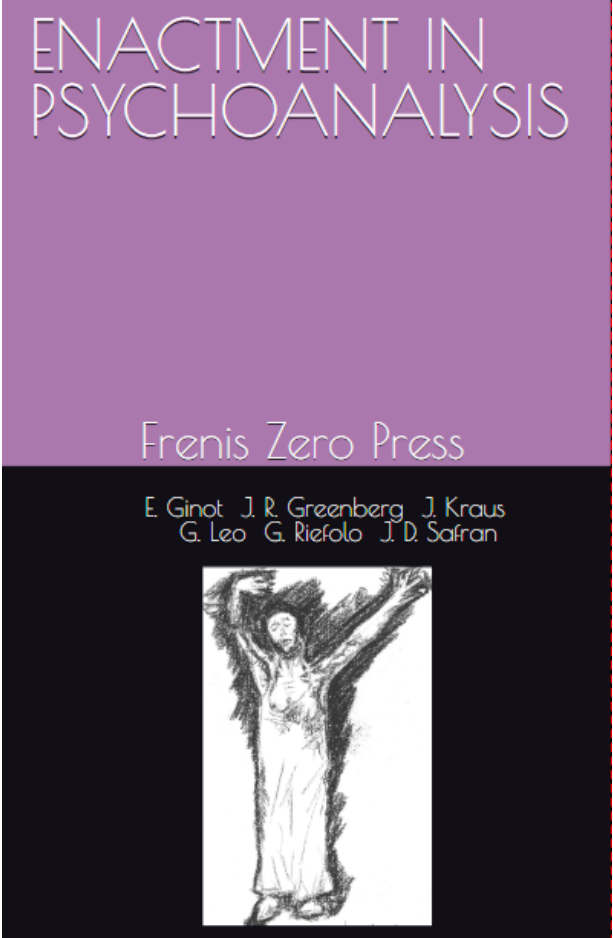
"Enactment
in Psychoanalysis"
Edited
by Giuseppe Leo & Giuseppe Riefolo
Writings
by: E. Ginot J.R.
Greenberg J. Kraus J.D. Safran
Publisher:
Frenis Zero
Collection:
Borders of Psychoanalysis
Year:
2019
Pages:
326
ISBN: 978-88-97479-15-4
Click
here to order the book
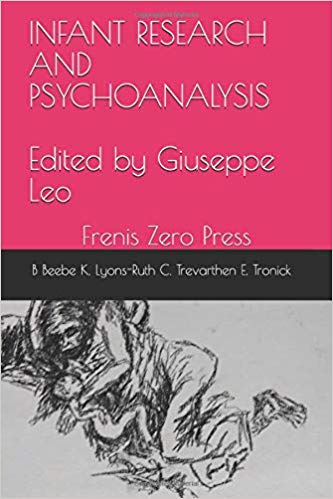
"Infant
Research and Psychoanalysis"
Edited
by Giuseppe Leo
Writings
by: B. Beebe K.
Lyons-Ruth J. P. Nahum E. Solheim C.
Trevarthen E. Z. Tronick L.
Vulliez-Coady
Publisher:
Frenis Zero
Collection:
Borders of Psychoanalysis
Year:
2018
Pages:
273
ISBN: 978-88-97479-14-7
Click
here to order the book

"Fundamentalism
and Psychoanalysis"
Edited
by Giuseppe Leo
Prefaced
by: Vamik D. Volkan
Writings
by: L. Auestad W.
Bohleber S. Varvin L. West
Publisher:
Frenis Zero
Collection:
Mediterranean Id-entities
Year:
2017
Pages:
214
ISBN: 978-88-97479-13-0
Click
here to order the book
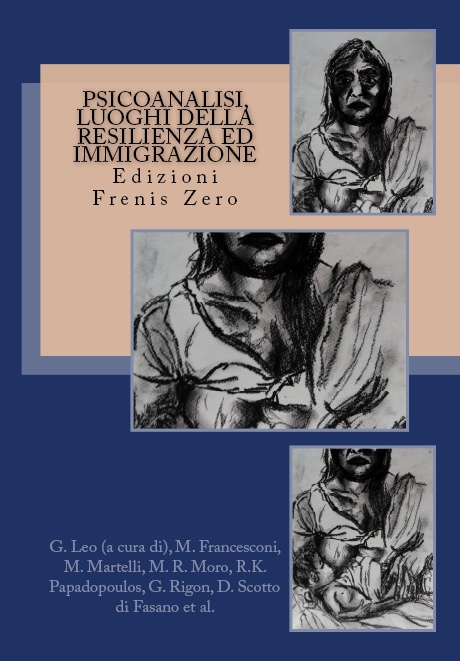
"Psicoanalisi, luoghi della resilienza
ed immigrazione"
Edited
by/a cura di:
Giuseppe Leo
Writings by/scritti di:
S.
Araùjo Cabral, L.
Curone,
M. Francesconi,
L.
Frattini,
S.
Impagliazzo,
D. Centenaro Levandowski, G. Magnani, M. Manetti, C. Marangio,
G. A. Marra e Rosa, M. Martelli, M. R. Moro,
R. K. Papadopoulos, A. Pellicciari,
G. Rigon,
D.
Scotto di Fasano,
E. Zini, A. Zunino
Editore/Publisher: Edizioni Frenis Zero
Collection/Collana: Mediterranean
Id-entities
Anno/Year:
2017
Pagine/Pages:
372
ISBN:978-88-97479-11-6

"Psicoanalisi in Terra Santa"
Edited
by/a cura di: Ambra Cusin & Giuseppe Leo
Prefaced by/prefazione
di:
Anna Sabatini Scalmati
Writings by/scritti di:
H. Abramovitch A. Cusin M. Dwairy A. Lotem M.
Mansur M. P. Salatiello Afterword
by/ Postfazione
di:
Ch. U. Schminck-Gustavus
Notes by/ Note di: Nader Akkad
Editore/Publisher: Edizioni Frenis Zero
Collection/Collana: Mediterranean
Id-entities
Anno/Year:
2017
Pagine/Pages:
170
ISBN:978-88-97479-12-3

"Essere bambini a Gaza. Il trauma
infinito"
Authored
by/autore: Maria Patrizia Salatiello
Editore/Publisher: Edizioni Frenis Zero
Collection/Collana: Mediterranean
Id-entities
Anno/Year:
2016
Pagine/Pages:
242
ISBN:978-88-97479-08-6

Psychoanalysis,
Collective Traumas and Memory Places (English Edition)
Edited
by/a cura di: Giuseppe Leo Prefaced by/prefazione
di:
R.D.Hinshelwood
Writings by/scritti di: J. Altounian
W. Bohleber J. Deutsch
H. Halberstadt-Freud Y. Gampel
N. Janigro R.K. Papadopoulos
M. Ritter S. Varvin H.-J. Wirth
Editore/Publisher: Edizioni Frenis Zero
Collection/Collana: Mediterranean
Id-entities
Anno/Year:
2015
Pagine/Pages:
330
ISBN:978-88-97479-09-3

"L'uomo
dietro al lettino" di
Gabriele Cassullo
Prefaced
by/prefazione di: Jeremy
Holmes
Editore/Publisher: Edizioni Frenis Zero
Collection/Collana: Biografie
dell'Inconscio
Anno/Year:
2015
Pagine/Pages:
350
ISBN:978-88-97479-07-9
Prezzo/Price:
€ 29,00
Click
here to order the book
(per Edizione
rilegata- Hardcover clicca qui)

"Neuroscience
and Psychoanalysis" (English Edition)
Edited by/a cura di: Giuseppe Leo Prefaced by/prefazione
di: Georg Northoff
Writings by/scritti di: D. Mann
A. N. Schore R. Stickgold
B.A. Van Der Kolk G. Vaslamatzis M.P. Walker
Editore/Publisher: Edizioni Frenis Zero
Collection/Collana: Psicoanalisi e neuroscienze
Anno/Year: 2014
Pagine/Pages: 300
ISBN:978-88-97479-06-2
Prezzo/Price: € 49,00
Click
here to order the book

Vera
Schmidt, "Scritti su psicoanalisi infantile ed
educazione"
Edited by/a cura di: Giuseppe Leo Prefaced by/prefazione
di: Alberto Angelini
Introduced by/introduzione di: Vlasta Polojaz
Afterword by/post-fazione di: Rita Corsa
Editore/Publisher: Edizioni Frenis Zero
Collana: Biografie dell'Inconscio
Anno/Year: 2014
Pagine/Pages: 248
ISBN:978-88-97479-05-5
Prezzo/Price: € 29,00
Click
here to order the book

Resnik,
S. et al. (a cura di Monica Ferri), "L'ascolto dei
sensi e dei luoghi nella relazione terapeutica"
Writings by:A.
Ambrosini, A. Bimbi, M. Ferri, G.
Gabbriellini, A. Luperini, S. Resnik,
S. Rodighiero, R. Tancredi, A. Taquini Resnik,
G. Trippi
Editore/Publisher: Edizioni Frenis Zero
Collana: Confini della Psicoanalisi
Anno/Year: 2013
Pagine/Pages: 156
ISBN:978-88-97479-04-8
Prezzo/Price: € 37,00
Click
here to order the book
Silvio
G. Cusin, "Sessualità e conoscenza"
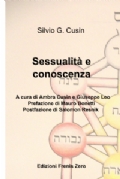
A cura di/Edited by: A. Cusin & G. Leo
Editore/Publisher: Edizioni Frenis Zero
Collana/Collection: Biografie dell'Inconscio
Anno/Year: 2013
Pagine/Pages: 476
ISBN: 978-88-97479-03-1
Prezzo/Price:
€ 39,00
Click
here to order the book
AA.VV.,
"Psicoanalisi e luoghi della riabilitazione", a cura
di G. Leo e G. Riefolo (Editors)
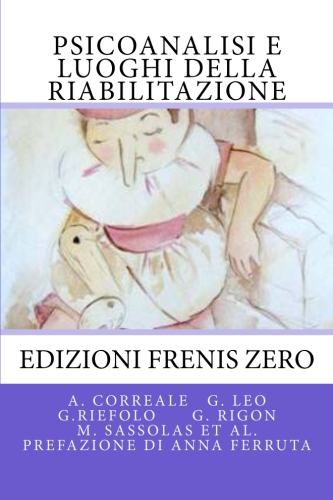
A cura di/Edited by: G. Leo & G. Riefolo
Editore/Publisher: Edizioni Frenis Zero
Collana/Collection: Id-entità mediterranee
Anno/Year: 2013
Pagine/Pages: 426
ISBN: 978-88-903710-9-7
Prezzo/Price:
€ 39,00
Click
here to order the book
AA.VV.,
"Scrittura e memoria", a cura di R. Bolletti (Editor)

Writings by: J.
Altounian, S. Amati Sas, A. Arslan, R. Bolletti, P. De
Silvestris, M. Morello, A. Sabatini Scalmati.
Editore/Publisher: Edizioni Frenis Zero
Collana: Cordoglio e pregiudizio
Anno/Year: 2012
Pagine/Pages: 136
ISBN: 978-88-903710-7-3
Prezzo/Price: € 23,00
Click
here to order the book
AA.VV., "Lo
spazio velato. Femminile e discorso
psicoanalitico"
a cura di G. Leo e L. Montani (Editors)
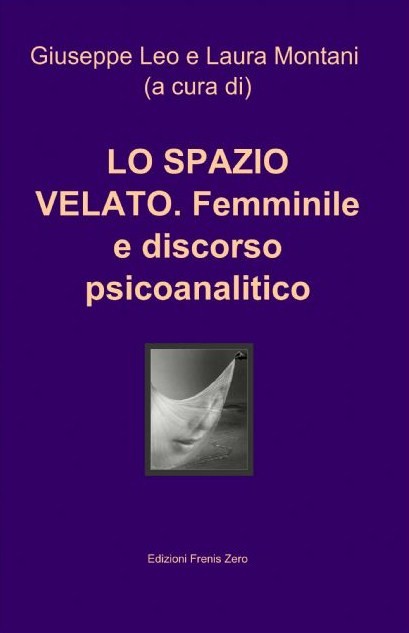
Writings by: A.
Cusin, J. Kristeva, A. Loncan, S. Marino, B.
Massimilla, L. Montani, A. Nunziante Cesaro, S.
Parrello, M. Sommantico, G. Stanziano, L.
Tarantini, A. Zurolo.
Editore/Publisher: Edizioni Frenis Zero
Collana: Confini della psicoanalisi
Anno/Year: 2012
Pagine/Pages: 382
ISBN: 978-88-903710-6-6
Prezzo/Price: € 39,00
Click
here to order the book
AA.VV., Psychoanalysis
and its Borders, a cura di
G. Leo (Editor)

Writings by: J. Altounian, P.
Fonagy, G.O. Gabbard, J.S. Grotstein, R.D. Hinshelwood, J.P.
Jimenez, O.F. Kernberg, S. Resnik.
Editore/Publisher: Edizioni Frenis Zero
Collana/Collection: Borders of Psychoanalysis
Anno/Year: 2012
Pagine/Pages: 348
ISBN: 978-88-974790-2-4
Prezzo/Price: € 19,00
Click
here to order the book
AA.VV.,
"Psicoanalisi e luoghi della negazione", a cura di A.
Cusin e G. Leo

Writings by:J.
Altounian, S. Amati Sas, M. e M. Avakian, W. A.
Cusin, N. Janigro, G. Leo, B. E. Litowitz, S. Resnik, A.
Sabatini Scalmati, G. Schneider, M. Šebek,
F. Sironi, L. Tarantini.
Editore/Publisher: Edizioni Frenis Zero
Collana/Collection: Id-entità mediterranee
Anno/Year: 2011
Pagine/Pages: 400
ISBN: 978-88-903710-4-2
Prezzo/Price: € 38,00
Click
here to order the book
"The Voyage Out" by Virginia
Woolf

Editore/Publisher: Edizioni Frenis Zero
ISBN: 978-88-97479-01-7
Anno/Year: 2011
Pages: 672
Prezzo/Price: € 25,00
Click
here to order the book
"Psicologia
dell'antisemitismo" di Imre Hermann
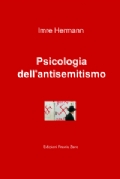
Author:Imre Hermann
Editore/Publisher: Edizioni Frenis Zero
ISBN: 978-88-903710-3-5
Anno/Year: 2011
Pages: 158
Prezzo/Price: € 18,00
Click
here to order the book
"Id-entità mediterranee.
Psicoanalisi e luoghi della memoria" a cura di Giuseppe Leo
(editor)

Writings by: J.
Altounian, S. Amati Sas, M. Avakian, W. Bohleber, M. Breccia, A.
Coen, A. Cusin, G. Dana, J. Deutsch, S. Fizzarotti Selvaggi, Y.
Gampel, H. Halberstadt-Freud, N. Janigro, R. Kaës, G. Leo, M.
Maisetti, F. Mazzei, M. Ritter, C. Trono, S. Varvin e H.-J. Wirth
Editore/Publisher: Edizioni Frenis Zero
ISBN: 978-88-903710-2-8
Anno/Year: 2010
Pages: 520
Prezzo/Price: € 41,00
Click
here to have a preview
Click
here to order the book
"Vite soffiate. I vinti della
psicoanalisi" di Giuseppe Leo
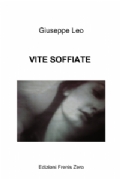
Editore/Publisher: Edizioni Frenis Zero
Edizione: 2a
ISBN: 978-88-903710-5-9
Anno/Year: 2011
Prezzo/Price: € 34,00
Click
here to order the book
"La Psicoanalisi e i suoi
confini" edited by Giuseppe Leo
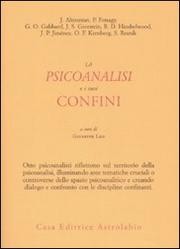
Writings by: J.
Altounian, P. Fonagy, G.O. Gabbard, J.S. Grotstein, R.D.
Hinshelwood, J.P. Jiménez, O.F. Kernberg, S. Resnik
Editore/Publisher: Astrolabio Ubaldini
ISBN: 978-88-340155-7-5
Anno/Year: 2009
Pages: 224
Prezzo/Price: € 20,00
"La Psicoanalisi. Intrecci Paesaggi
Confini"
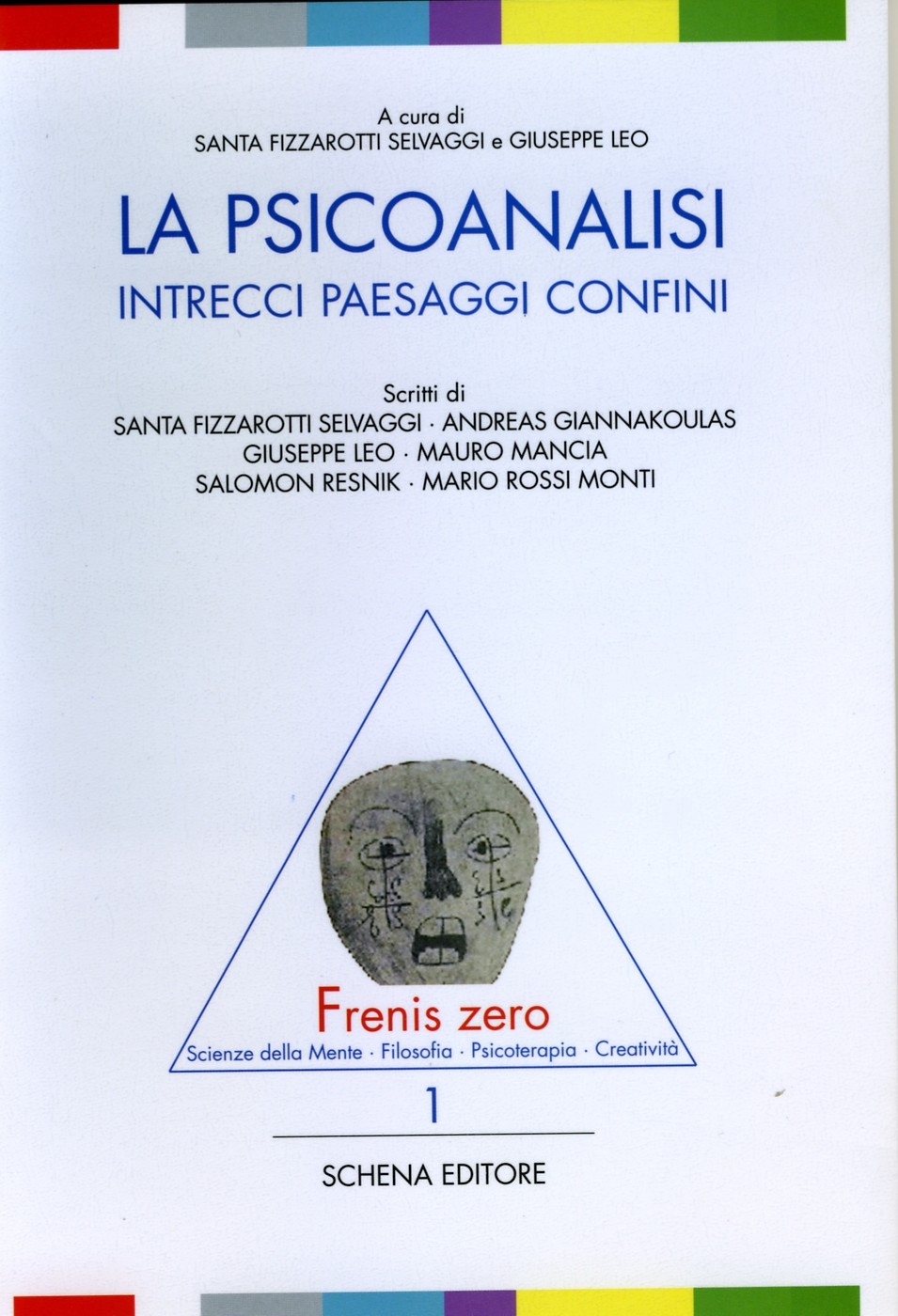
Edited by S. Fizzarotti Selvaggi, G.Leo.
Writings by: Salomon Resnik, Mauro Mancia, Andreas Giannakoulas,
Mario Rossi Monti, Santa Fizzarotti Selvaggi, Giuseppe Leo.
Publisher: Schena Editore
ISBN 88-8229-567-2
Price: € 15,00
Click here to order the
book |
|
Introduction
Tasked
with writing this paper, I have spent much of the year reading up on
the development of gender identity, hoping to provide you with an
outline of normal development and the departures from it. The more I
read, the more impossible this endeavour seemed to become. There is no
straight developmental line towards ‘normal’ gender identity, let
alone consensus in the psychoanalytic world or any other as to what
constitutes normal gender identity or normal development. What
‘gender’ denotes is not clear – a cultural construct, the
psychic representation of masculinity and femininity, “all the
members of one sex” (Collins English Dictionary), or the “state of
being male, female or neuter” (ibid.)? Even where a differentiation
is assumed, for example between gender as a psychological phenomenon
distinct from and relatively independent of biological, or anatomical,
or natal sex, there is often slippage between concepts. The choice of
‘biological’, or ‘anatomical’, or ‘natal’ sex, ostensibly
to describe the same material facts, can itself contain a subtle
declaration of allegiance to one view or another – and there are
very different views about how material the facts referred to are or
need to be.
I
have miserably failed to meet my brief. Though sharing with you some
of the difficulties I encountered, and some of the questions I was
left with will, I hope, help to set a frame for this weekend’s
discussions.
Sex
and gender
The
very first problem I came up against is the meaning of ‘gender’.
In my mother tongue, we do not have separate terms for biological sex
and gender, and the word we use for both – Geschlecht – has other
meanings in addition, which translate back as race [Gattung], kinship
group [Sippe], lineage [Abstammung] and generation [Generation] (Collins
German Dictionary). I imagine if we went around the room, more of
these linguistic peculiarities would be found. Thus, from the
beginning, sex and/or gender are imbued with culture, with history and
with significations that are not the same depending on where you are
born. Gender and sex may be more or less distinct concepts depending
on the language you learn.
Though
wherever on earth your mother might have given birth to you, whatever
might have become your fatherland or your mother country, your body
would have been what it was. It comes in two basic models and a
variety of shades, plus the exceptions – very few – that prove the
rule. And wherever its origins, this body would have been on course
for a developmental arc, the four ages of man – or Mensch, as we
would say in my language, indicating neither sex nor gender – that
is the fate of everyone; unless you die first. We might add puberty
and the menopause to what the body will do by itself, if left to its
own devices, irrespective of how anyone speaks about it.
Gender
and sex may be more or less distinct concepts depending on your native
tongue, which may give you more or less extensive, and more or less
specialist vocabularies with which to speak about either, but, unless
you are one of the few exceptions, there would have been no
‘more or less’ about your biological sex. The two more or less
distinct concepts, sex and gender, describe categories with very
different properties: a binary non-choice in the first case – I
shall give up mentioning the exceptions for brevity’s sake – and
endless possibilities, as we shall see, in the other. The relationship
between the two cannot but be a challenge.
RuPaul
breaks into song with his/her attempt to rise to it: “We’re all
born naked and the rest is drag”1 . For Robert Stoller, who famously
coined the phrase ‘core gender identity’ in the 1960s, the rest
was, a little more encompassing, culture. Drawing a distinction
between ‘sex’ as the biological factor and ‘gender’ as the
social contribution to who we are, or become, he came to see gender as
largely culturally determined; biological forces may augment or
interfere with the post-natal learning of it, much of it completed by
the age of two. Though, as he would have been the first to admit, the
research which informed his view, at UCLA’s Gender Identity Clinic,
was of course itself bound by a very particular, mostly white, mostly
middle-class cultural context (Stoller, 1968 [1984]). Stoller’s view,
that gender is pretty much independent of the body, was welcomed by
many, not least because it mitigates against an ‘essentialist’
pathologizing of non-binary choices and the violent prejudice it can
give rise to (see for example: Marsh, 2017).
Paradoxically,
it is often the desirable, wished-for freedom from violent,
pathologizing constraint that the uncoupling of biology and culture
can be seen to promise, which appears to put pressure on the
distinction and seems responsible for conceptual slippage. As, perhaps,
in this example: “It would certainly be easier if fewer aspects of
life were gender-based. If school toilets and changing rooms were not
arranged around gender”, Polly Carmichael, director of gender
identity services at the Tavistock Clinic, argues (Carmichael, 2017).
But what is it that the signs on public lavatories indicate? Gender or
sex? And what is their furniture designed for? Social constructs or
physical realities? My own gender has not prevented me from using
toilets marked Male when the queue for the Ladies’ is intolerable,
but my anatomy draws the line at a pissoir. I shall not go into the
problems caused by incorrect use of the other type of toilet by the
other type of anatomy. It is a simple if not very elegant instance of
the difficulty with separating the body, its shapes and its needs,
from gender. One of the informants for Richard Ekins and David King’s
study of The Transgender Phenomenon makes the case more poignantly:
“Practically and emotionally, becoming a man, physically, was the
least difficult part of my role reassignment. It was, however, the
most frustrating because it was only a compromise. I know that,
however good the treatment, I’d never be fully male, functionally,
anatomically or chromosomally” (Ekins & King, 2006, p.
47).
The
tension between the body, stubbornly limited and stubbornly resistant
to our imaginings, and the anarchic, polymorphously perverse
multitudinousness of the unconscious, in which we can be any shape we
like and all the others too, perhaps amounts to psychoanalysis’s
very own uncertainty principle (Heisenberg, 1927); it is never quite
possible to fix on both precisely at the same time. They are of a
different order. And make a problem of time itself, the passing of
which is all too indelibly inscribed on the body but absent from the
unconscious, dividing analytic focus on The Gender Conundrum into
diachronic, developmental accounts this side of the Channel, and a
synchronic, ahistorical approach to the structures of the mind and
their interconnections on the other (Breen, 1993). Though even –
perhaps especially – where, as in the Lacanian tradition,
psychoanalysis attempts to liberate itself most radically from the
body, where nothing in the unconscious is seen to accord with it, the
body haunts psychoanalysis, suggests Andrew Parker in a paper also
quoted by Breen. Leaning on Jane Gallop’s work, he points out
that “signification requires reference as its condition of
possibility” (Parker, 1986, p. 101) – there can be no phallus
without reference to the penis. The castration complex, “that
privileged moment in which earlier experiences are reorganised and
given special meaning, initiating the meaning of masculinity and
femininity…, [this] ‘primal phantasy’ which organises phantasy
life, irrespective of personal experience” (Breen, 1993, p. 20),
relies on the existence of differently shaped bodies. Lacan himself
makes the leap thus: “It can be said that this signifier [the
phallus] is chosen because it is the most tangible element in the real
of sexual copulation… It might also be said that, by virtue of its
turgidity, it is the image of the vital flow as it is transmitted in
generation” (Lacan, 1977, p. 287; emphasis added).
Perhaps
constructions of gender, and of identity beyond it, cannot but be
haunted by the body too, notwithstanding cultural trends to the
contrary. To illustrate, and because culture would seem to become a
legitimate concern if gender identity is seen as its result, let me
take those of you who have time to read ahead on a brief excursion
into the world we live in.
Even
the most cursory survey of social trends would seem to suggest that
much broader questions of identity, beyond gender, have been subject
to exponential growth, and identity itself to an ever-greater division
– divisiveness? fragmentation? – of models available. More than
once, I wondered whether these might not be questions of Civilisation
and its Discontents (Freud, S. 1930 [1929]) rather than identity or
gender.
And
what are we to do with these trends? The enormous change in social
conventions, the ‘current climate’, prevailing media interests and
so on do not change our task, that is to understand the vicissitudes
of this reality in conflict and repression, insists Donald Kaplan in a
paper nearly 30 years old: “The actual variability of social reality
is not the technical problem for psychoanalysis… More in keeping
with the interests of the analytic method is the variability of uses
to which social reality is put in neurogenesis… Transference is the
realm of diagnosis for psychoanalysis” (1990, p. 8). What uses
social reality might be put to is a matter for each individual
analysis; no two are alike. Or as Freud put it to Abraham in 1915:
“Anal-eroticism, castration complexes, etc are ubiquitous sources of
excitation which must have their share in every clinical picture. One
time, this is made from them, another time that. Naturally we have the
task of ascertaining what is made from them, but the explanation of
the disorder can only be found in the mechanism considered dynamically,
topographically, and economically” (cited in: Stoller, 1968 [1984],
p. 141).
Gender
identity development
Individual
development is precisely that. And not at all straight forward. Susan
Coates thought it was “time to jettison the concept of developmental
lines and replace it with a concept of multiple pathways that are very
complexly determined” 20 years ago, believing this to be the case
especially with regards to gender identity development (1997, p. 46).
“Whatever sequences are observed in a particular domain must be
simultaneously understood in the context of multiple transactions
between self and other across different domains with consequences that
cannot be predicted a priori" (ibid. p.45). Perhaps it is not
necessary to jettison Anna Freud’s (1963) developmental lines
altogether, but more a case of seeing them twine, twist, turn and snag
together in ways not just unpredictable but unique.
In
this melee, gender might be “more usefully imagined as a function
than simply as a structure…, as a way of doing various psychic and
relational tasks in certain ways” (Harris, 2009, p. 102). Or as “a
complex psychological construction centring on the body, interactions
with the bodies of others, and the drives” (Dahl, 1988, p. 364); a
complex interplay involving “physical sexual characters, mental
sexual characters [and]… object choice which, up to a certain point,
vary independently of one another, and are met with in different
individuals in manifold permutations” (Freud, S. 1920, p. 170). It
is not simply a case of “‘a feminine mind, bound therefore to love
a man, but unhappily attached to a masculine body; a masculine mind,
irresistibly attracted to women, but, alas! imprisoned in a feminine
body’”, Freud observed with regards to popular ideas about
homosexuality in 1920 (ibid. p. 170). Today, he might also have been
talking about the ‘transgender phenomenon’.
The
development of manifold permutations, fulfilling a variety of psychic
and relational tasks in ways that are themselves subject to both
constant evolution and Nachträglichkeit is beyond my powers of
exposition. In the best-case scenario, that of “common unhappiness”
(Freud & Breuer, 1893-1895, p. 305), permutations of object choice
and gender can be contained in bodies the shape and shade of which was
given, and whose only evolution is, broadly speaking, towards
decrepitude. The literally sharp end of gender identity development,
the numbers of those who feel they cannot, in the bodies they have,
‘contradict themselves, be large and contain multitudes’, to
slightly misquote Walt Whitman (1855 [2007], p. 67), and hence seek
recourse to the surgeon’s knife, is still very small however. And
themes appear to emerge in the equally small psychoanalytic literature
on ‘atypical gender development’, ‘gender dysphoria’, or
‘gender identity disturbance’ – the choice of term can seem
programmatic – which I shall try to outline instead.
Though
before my focus narrows, I will share with you a thought that kept
coming back to me in relation to the other, no more than commonly
miserable end. The end that can make anything LBGTQIA and gender fluid
look like ‘the thing’, and sound like the loud and proud
expression of a progressive politics which sets itself in opposition
to the forces of reaction. To ‘anyone over 30’, reactionary by
definition, past it, and past it especially where matters of sex are
concerned; or gender. I wonder whether on this level gender is,
perhaps for some, perhaps to an extent, ‘the new black’. Perhaps
on this level, for the current generation of young people, gender
fluidity is the ‘free love’ of 1960s ‘counter-culture’, the
Sex Pistols’ 70s punk, “No Feelings”, “Never Mind the Bollocks”
rejection of everything, or the gender-bending, sexually explicit
antics of “Karma Chameleon”, the “Material Girl”, and Frankie
Goes to Hollywood in the 80s: the employment of peers and popular
culture – that “buddy effect” – in the service of managing
adolescence’s most difficult developmental task. Perhaps the
vehement, wholesale repudiation of the parent generation’s sexual
mores, and a certain pleasure in scandalising its outdated
sensibilities, have always played a role in helping young adults set
themselves apart from oedipal fathers and mothers, above all sexually.
And when every sexual taboo bar incest appears to have been broken
already, in every available medium, gender has, perhaps, to be ‘the
new sex’.
And
perhaps where this is not enough to separate and dis-identify the
adolescent body from that of the object which will otherwise enslave
it, dangerously, incestuously, or where no such separation can be
contemplated at all, where the ‘final sexual organisation’ in
which all bodies are potent becomes an either/or of survival, of one
body or another, it is the body itself – and maybe not really its
gender, but very much its sex – that must be altered, violently (Laufer
& Laufer, 1989). Is the demand for a surgeon’s knife to
‘attack’ a healthy body in pursuit of gender reassignment
categorically different from attacks on their bodies the adolescents
in our consulting rooms carry out themselves, with blades, pills,
drugs, food or no food, matches, motorbikes, you name it?
Juliet
Mitchell (2004) offers an interesting hypothesis about sexual
difference, gender, and cultural trends. Stoller “notoriously”
having taken sexuality out of gender by turning it into a sociological
trope, she believes its meaning to have shifted again in recent
decades to include once more the relationship between women and men;
sex. Except not sex as in reproduction, the sort that even in this day
and age requires two differently sexed bodies, or products thereof as
a minimum, to result in pregnancy and child birth with both of those
still and absolutely the sole preserve of female bodies. In her
argument and by contrast, ‘gender’ “expresses a sexuality that
is not primarily or predominantly procreative”. Indeed, the very
“prevalence of gender as a concept… has come about because since
the 1960s, dominant sexual modes in the West have been
non-reproductive” (ibid. pp.67/68). This type of sexuality does not
need sexual difference, and its excitements do not risk losing their
erotic charge by being tied to biological necessity and the survival
of the species. This type of sexuality, she suggests, might be heir to
Freud’s radical undermining of the notion that there is anything
‘natural’ or ‘normal’ about sexual desire in the Three Essays
(1905) – heir in radical, subversive nature, as well as heir to a
heritage that keeps evolving. ‘Gender’, she says pithily, “is
the polymorphously perverse child, grown up” (Mitchell, 2004, p.
73). And, might one add, not tethered by reproduction to a ‘final
sexual organisation’ that must make reference to the oedipal parents
of the primal scene and their differently shaped bodies? Mitchell sees
“the perpetuation of … polymorphously perverse, non-reproductive
sexuality tak[ing] place through lateral, not vertical relationships,
starting with siblings”, pointing out that “the advent of a
sibling (or awareness of the older other who is so like the emergent
infantile subject) produces ecstasy along narcissistic lines and
despair occasioned by the sense of annihilation, of being displaced/
replaced or just ‘not there’” (ibid. pp. 75/76, emphasis added).
Are
these the ecstasies and the agonies of the 21st century? The last
frontier in a turning away from the primal scene and the ultimate
subsuming of sexuality – now gender – into the narcissistic
register? We will hear more about trajectories of narcissism and
gender identity this afternoon. Though narcissism, and siblings too,
have already featured in the psychoanalytic literature on atypical
gender identity.
Atypical
gender identity development
A
certain overlap between gender identity disorder and both autism
(de Vries, et al., 2010) and trauma (see for example: Coates
& Moore, 1998) seems to exist, though as to the course an
individual’s seemingly atypical gender identity development
will take, the younger the child, the more difficult it is to
predict the eventual outcome (Di Ceglie, 1998, p. 11). Gender
identity disorder appears to persist into adolescence in only
about 20% of pre-pubertal children (Di Ceglie, 2009, p. 6). In
most children who present with gender variance between the ages
of 8 and 12 but receive no mental health interventions, this
will not continue beyond puberty; it is often the onset of
puberty that marks the change. What might be responsible for
desistance is unclear, though hormonal changes at puberty,
exclusion from peers, and shifts in cognitive development have
all been hypothesized as possible triggers (research cited in:
Lament, 2014, p. 17).
How
easy is it, I wondered, in an age that struggles with ambiguity
in the very act of promoting it, where gender fluidity is the
collective term given to 114 mutually exclusive subdivisions,
for parents to remember that small children may well want to be
Postman Pat one day and Queen of England the next? To quote
Susan Coates once more: “In development we are not seeing an
inborn femininity or masculinity [or one of the 112 other
varieties of gender] gradually unfold itself according to some
prearranged plan, but rather a complex set of exchanges between
self and other in which gender can take on a rich variety of
meanings and gender performance can be put to a variety of
usages” (1997, p. 49).
The
unconscious uses to which atypical gender identity is put in the
course of development, so a survey of the psychoanalytic
literature suggests, fall into two broad categories: issues of
separation, and adaptations to what is perceived to be desired
by the object. They are not, of course, unrelated, many of the
reports from child analysts citing both alongside each other. I
will attempt to give you a not altogether systematic,
whistle-stop tour: It seems fitting to begin with Stoller’s
work, although it is largely restricted to boys; gender identity
disorder is still much more common in boys. Figures he cited in
1968, putting female ‘transsexualism’ at about one third to
one eighth of the frequency in males, are not dissimilar to
current estimates. A speculative explanation revolves around
“the fact that almost everyone spends infancy in close contact
with a female body (mother), so that if a disturbance in the
process of identification should occur, it is more likely in the
male child, who must give up or outgrow his identifications with
a female, a task not required of female children” (1968,
p.197).
Another
take on the preponderance of male-to-female transitioning, more
cultural still than Stoller’s perhaps, was suggested by Angela
Joyce who kindly read a draft of this paper (thank you!). Might
it be that masculinity is in crisis in this post-feminist age,
she wondered, and such ‘gender-bending’ an attempt to evade
a masculinity that is compromised?
Though
let us return to Stoller for now: Mothers feature large in the
stories he unearthed from ‘his’ boys, primarily as agents
mitigating against separation on the most immediate level,
between their own bodies and those of their sons. Women
predisposed to appropriate their boys’ bodies by a certain
ambivalence towards their own femininity turn these infants into
“mother’s feminized phallus” (p.120), attached to her
quite literally, skin to skin. An excessive identification with
such a mother is the result not of anxiety, but of an endeavour
to maintain a state of blissful symbiosis in which no sensual
pleasure goes ungratified. It leads Stoller to feel that “this
delay in permitting the boys to be free of their mothers’
bodies, of their constant cuddling and following eyes, … may
be the primary pathology” (p.98). Fathers contribute with
actual and/ or dynamic absence, and may be “not just …
permitting the mothers to feminise their sons, [but] very subtly
… pushing their sons back upon the mothers’ bodies”
(pp.96/97).
Ovesey
& Person (1973) too, see ‘the transsexual phenomenon’ as
a defence against threats to this kind of fusion, but emphasize
fear more than bliss. Early separation anxiety, before there is
proper self-object differentiation and menacing annihilation, is
thought to be at its root. A later paper clarifies their belief
that gender identification precedes the phallic-oedipal period (Person
& Ovesey, 1983). Separation anxiety also appears centrally
in an examination of “extreme boyhood feminity” (Coates
& Person, 1985), here linked to uneven maternal availability.
These boys, not sure their mothers want them – as themselves
rather than for themselves – and pressed to find ways to keep
her, settle for imitation. “[They] confuse being mother with
having mother” (ibid., p.708).
A
study of 30 boys during the second year, in the early genital
phase, revealed in the three found to be ‘more feminine’, to
wear their mums’ jewellery and clothes and engage in elaborate
doll play, greater castration anxiety and heightened aggression,
as well as stronger attachment to and identification with mother
(Galenson & Roiphe, 1980). With a particular kind of mother,
or a mother experienced in a particular way; with a mother that
threatens loss and whose loss is felt to be profoundly
threatening. Focussing once again on the earliest stages of
development, Coates, et al. (1991) make room for possible
contributions from genetic factors, via the child’s
temperament, but the theme of loss is also prominent in the
unconscious economies they uncover. A kind of ‘triple
whammy’, an awareness of gender difference in the absence of
fully established self-object constancy, coupled with an
experience of loss of mother, leads to a feminine identification
designed to handle separation and annihilation anxiety, and to
ward off aggression. Atypical gender identification is,
essentially, a variant of identification with the lost object.
We are still with boys and their mothers.
Individual
case reports from around the same time, of “Henry” (Roiphe,
1991) and “Billy” (McDevitt, 1995) for example, all make
similar observations. An intergenerational component is
particularly evident in Billy’s story, whose mother was
‘forced’ before him to woo parents she felt wanted not her
by adopting the desired boy child’s gender behaviour; in
relation to father, felt to prefer her (already) feminine sister,
especially. In turn, she would have preferred a girl not Billy,
and Billy ‘obliged’, maximising – in the absence of much
of a father – his chances of being loved by ‘choosing’ his
gender accordingly. It is a progression from his mother’s
predicament in both meanings of the term, the identification
with the parent whose loss is feared the main defence against it
for both, magnified in Billy, one might say, by having to manage
the ‘hand-me-down’ in addition to his own conflict. A mother
felt to ignore and devalue her boy’s phallic urges breeds
hostility. The resulting increase in castration anxiety further
fuels an identification with her.
A
little earlier, Kirsten Dahl (1988) argued for greater
complexity in the conceptualisation of gender identity
development than the near-exclusive reliance on processes of
identification and their vicissitudes. A child’s “failure to
differentiate from a primary feminine matrix, contained in the
symbiotic union between mother and child” (p.363), she
considered not just too simple an explanation for ‘pathologies
of gender’, but simply wrong. As well as an individual’s
adaptation to external reality and social conventions, highly
individual efforts to find compromise gratifications for
instinctual drives are thought to contribute to gender
construction. “Gender draws together”, she writes,
“aspects of ego development and libidinally driven derivatives
of infantile sexuality in the context of object relations,
narcissism, and aggressive desires. The pathway to a final
gender organisation [typical or not] is influenced by
development along all of these lines in interaction with one
another” (p.352). No two such pathways can possibly be the
same. No two sets of fantasies – seen as expressions of the
psychic effort involved – can possibly be the same, including
fantasies of gender.
With
Dahl, we also get to the girls, finally. Or to a girl at least,
“Marty”, a boy trapped in a girl’s body by her own
account. Though no claims are made for her story to be
representative. Indeed her story, like Billy’s and Henry’s
and those of Stoller’s children, contains elements with which
all of us will be familiar, whether we have ever seen a
gender-dysphoric patient or not – trauma and loss, family
difficulties of one kind or another, slights real or perceived,
and so on.
The
longitudinal study of another girl, “Mia”, seen in various
settings all the way from birth to adulthood (Olesker, 1998),
again underlines the uniqueness of unconscious fantasy as it
carefully follows her journey through intrapsychic conflict and
compromise formation. While this journey too is like no other,
the observation that her “masculine character formation”
began early in the second year, before (properly oedipal)
awareness of sexual difference, would seem to add weight to the
more general point of gender preceding sex; to a ‘sexuality’
in the register of narcissism rather than tied to a primal
scene. Rather strikingly, the parents of the primal scene Mia
was yet to discover are said to have been ambivalent about the
sex of their child from the start. For complex reasons of their
own, they would have preferred the opposite. In this respect,
Mia the girl’s story is the same as Billy’s and many of the
other boys’. A later paper (Olesker, 2003) finds this to be so
in all 5 cases examined: in each, the mothers wished for a child
of the opposite sex – and treated the one they got in highly
ambivalent ways. And in each case, the opposite sex sibling was
seen as preferred. It would be a peculiar irony if sex were the
victim, in some cases quite literally so, and gender the victor,
of an effort to maximise love, to secure an object’s libidinal
investment in a sexed and sexual body.
It
is, I will grant, a stretch of the imagination from an object’s
lack of love for the child’s sexed body to insecure attachment,
but still: 73% of boys with gender identity disorder have been
found to be insecurely attached to their mothers (cited in:
Zucker, 1998, p. 34). There is also an association, again for
boys, between gender identity disorder and a composite index of
maternal psychopathology (Zucker & Bradley, 1995).
Domenico
di Ceglie (1998), who has been working at the sharp end for
decades, notes that these boys seem to experience separation
from an attachment figure as a “psychological catastrophe”.
This may be based on “an unsatisfactory relationship with the
internalised breast and, in particular, temperamental
characteristics such as inability to tolerate frustration”,
leading the boy, via excessive splitting, to identify with an
all-gratifying, idealised mother image to ward off
disintegration and chaos. Psychic survival is ensured by
disavowing aspects of reality – of the real, male body (p.
19/20). Girls, by contrast, may perceive the mother to be under
threat – from depression, domestic violence, etc. – and
attempt to ensure both hers and their own (psychic) survival
with a similar disavowal, of a female body ‘too weak’ to
protect mother; thus also guarding against separation. He too,
like most other commentators, draws attention to the
concreteness of these children’s functioning, ‘too afraid of
fantasy to work out issues in play’ (Olesker, 1998). It is
seen to be connected to gender identity development beginning
early – when the ego is still largely a body ego is one
formulation (Olesker, 2003) – thus pushing, where problems
arise, concrete solutions. The relative capacity for symbol
formation and symbolic thinking may both contribute to the
rigidity of atypical gender organisations and correlate to its
persistence, di Ceglie (2009) believes.
A
radically different approach to the ‘transgender phenomenon’
has appeared more recently, citing in its support the failure of
both research and clinical experience to demonstrate
convincingly any of the explanatory hypotheses advanced thus far
(see for example studies cited in: Saketopoulou, 2014). Moreover,
questions of aetiology are seen to “arise only when gender
experience does not align with the body’s material surfaces”,
implying a bias in psychoanalytic thinking that accepts
normative gender identification at face value, while variations
must argue their legitimacy (ibid. p. 775/776). Treating the
gender of transsexual children not as symptom, but as a viable
subjective reality, as is suggested, turns the focus of previous
lines of enquiry inside out: rather than understanding the
meaning of fantasies of gender, it becomes a question of
“try[ing] to comprehend how unconscious fantasy may be
mobilised to manage the painful experience of gender/body
mismatch once it has been formed” (ibid. p.776). Thus, the
fantasy of being born into the wrong body, rather than giving
rise to it, can be seen as a solution to a painful discontinuity
between body and gender experience. Rather than possible
contributions to this pain from childhood trauma, it is the
child’s traumatisation by primary objects who “misgender”
it, insisting on its natal sex despite the child’s explicit
articulation of a different identity due to “gender-inflected
body-dysphoria” – this may present as early as age two or
three – that requires attention (ibid. p. 779).
An
entire volume of The Psychoanalytic Study of the Child was
dedicated to these ‘conundrums and controversies’ in 2014.
It begins with a carefully argued plea for “Listening and
Learning from Gender Non-Conforming Children” by Diane
Ehrensaft (2014). Very broadly in line with Saketopoulou, she
makes a case for therapeutic work to take account of the fact
that “the most common form of trauma [gender non-conforming
children] present is usually a consequence rather than a cause
of their gender nonconformity, typically a result of parental or
social rejection, harassment, and bullying” (p.42). From this
view, that non-acceptance of the child’s “unique gender
web” is the greatest source of psychic pain, follow two things:
“collaboration with [all] parties active in the child’s life
becomes an essential component of the [treatment] process”
(p.44) and, not essentially but quite possibly, medical
interventions such as hormone blocking to delay puberty. Her
case example, “Jacqueline/Thomas”, who began to complain
about being a girl in pre-school and started therapy at 9,
follows this trajectory.
Some
of her discussants detect a contradiction between Ehrensaft’s
view of gender as mutable throughout life, and her notion of a
‘true gender self’ that may be uncovered in what she calls
True Gender Self Therapy (Weinstein & Wallerstein, 2014).
All of them emphasize the continuous evolution of who we are,
based on a complex interplay of nature, nurture, and culture.
From this position of on-going development, they question the
advisability of preventing what might become of it at puberty
with hormone blockers (Knight, 2014), and the level of autonomy
over their bodily development that Ehrensaft is felt to imply
should be given to young children (Brinich, 2014). I could not
help noticing something else in the description of Jacqueline/Thomas’s
‘gender history’ and treatment. Conceived using a sperm
donor and born to a mother “delighted to have a girl”, no
male figure, fantasied or real, makes an appearance anywhere in
the detailed account of the child’s background and therapy –
except in the name Ehrensaft gives to mother: “Adrian”. And
in Jacqueline/Thomas’s wish to be a boy. I will leave you with
this thought.
Conclusion
If
I were to try and summarise what I have learned from a year
reading up on atypical gender identity development, and without
relevant clinical experience of my own, it would amount to this
hunch: parents’ unconscious needs and wishes are somehow
crucial. That gender identity begins to be forged pre-oedipally,
without reference to castration and sexual difference proper,
but in relation to objects whose understanding of and investment
in the bodies of their infants includes both, to whom the sex of
their child has meaning, for better or for worse, and before it
makes any sense to the child, seems to me somehow important.
Might it not be that if the ‘enigmatic message’ conveyed to
the infant is not just sexual beyond its comprehension (Laplanche,
1997), but ambivalent about its sex, this might mitigate against
an investment in the sexed body – one of the two models – it
has? And might not, in the child’s effort to maximise love,
this sexed body fall victim to a construction of gender that
need not refer to it?
Incidentally,
if these constructions persist, so it can appear, sex may be
‘sacrificed’ altogether. Reading through more than half a
century’s worth of testimony by and about transgendered people
(in Ekins & King, 2006), it is striking how very little sex
– of the erotic rather than the biological variety – there
is. Though, as the authors caution, this may have been due to a
perceived need to keep ‘perverse’ desires secret and collude
with a ‘sanitised’ medical model of gender dysphoria that
offers reassignment as cure; it might change.
Like
so much. In the end, we can only really understand how a
particular child constructs gender, and keeps constructing it,
through all phases of development, amidst the prevailing
cultural winds and from inside a body that has definite limits
and definitely limits, by following the twists and turns, and
the travails, of its unique unconscious elaborations.
We
are all born naked. The rest isn’t drag but a drag, I’d say,
for some of us more than others. |
| Notes
1
https://www.youtube.com/watch?v=ztQUcl2v-tU |
| References
Aitkenhead, D., 2017. The Guardian. [Online] Available at:
https://www.theguardian.com/us-news/2017/feb/25/rachel-dolezal-not-going-stoopapologise-grovel
[Accessed 9 July 2017].
Benjamin, H., 1966. The Transsexual Phenomenon. New York:
Julian Press.
Brain, C., 1998. Biological Contributions to Atypical Gender
Identity Development. In: D. Di Ceglie & D. Freedman, eds. A
Stranger in My Own Body. London: Karnac, pp. 63-78.
Breen, D., 1993. General Introduction. In: D. Breen, ed. The
Gender Conundrum. London: Routledge, pp. 1-39.
Brinich, P. M., 2014. Discussion of Diane Ehrensaft's
"Listening and learning from gendernonconforming children".
Psychoanalytic Study of the Child, Volume 68, pp. 71-78.
Carmichael, P., 2017. The Guardian. [Online] Available at:
https://www.theguardian.com/commentisfree/2017/jul/06/child-without-gender-sexcanadian-health-card-u
[Accessed 9 July 2017].
Coates, S., 1997. Is it Time to Jettison the Concept of
Developmental Lines? Commentary on de Marneffe's Paper "Bodys
and Words". Gender and Psychoanalysis, 2(1), pp.
35-53.
Coates, S., Friedman, R. & Wolfe, S., 1991. The aetiology
of boyhood gender identity disorder: a model for integrating
temperament, development and psychodynamics. Psychoanalytic
Dialogues, Volume 1, pp. 481-523.
Coates, S. & Person, E., 1985. Extreme boyhood femininity:
isolated behavior or pervasive disorder?. Journal of Academic
Child Psychiatry, Volume 24, pp. 702-709.
Coates, S. W. & Moore, M. S., 1998. The Complexity of
Early Trauma: Representation and Transformation. In: D. Di
Ceglie & D. Freedman, eds. A Stranger in my Own Body. London:
Karnac, pp. 39-62.
Dahl, K. E., 1988. Fantasies of Gender. The Psychoanalytic
Study of the Child, Volume 43, pp. 351-365.
de Vries, A. L. C. et al., 2010. Autism Spectrum Disorders in
Gender Dysphoric Children and Adolescents. Journal of Autism and
Developmental Disorders, 40(8), pp. 930-936.
Defend Europe, 2017. Defend Europe (A Project of Generation
Identity, Schönaugasse 102a, 8010 Graz). [Online] Available at:
http://defendeurope.net/the-mission_fr/ [Accessed 12 August
2017].
Di Ceglie, D., 1998. Reflections on the Nature of the "Atypical
Gender Identity Organisation". In: D. Di Ceglie & D.
Freedman, eds. A Stranger in My Own Body. Atypical Gender
Identity Development and Mental Health. London: H. Karnac (Books)
Ltd, pp. 9-25.
Di Ceglie, D., 2009. Engaging Young People with Atypical
Gender Identity Development in Therapeutic Work: A Developmental
Approach. Journal of Child Psychotherapy, 35(1), pp. 3-12.
Di Ceglie, D. & Freedman, D., 1998. A Stranger in My Own
Body. Atypical Gender Identity Development and Mental Health.
London: Karnac Books.
Ehrensaft, D., 2014. Listening and learning from gender
non-conforming children. Psychoanalytic Study of the Child,
Volume 68, pp. 28-56.
Ekins, R. & King, D., 2006. The Transgender Phenomenon.
London: Sage Publications Ltd.
Freud, A., 1963. The Concept of Developmental Lines.
Psychoanalytic Study of the Child, Volume 18, pp. 245-265.
Freud, S., 1905. Three Essays on the Theory of Sexuality. In:
Standard Edition Vol. VII. London : Hogarth Press, pp.
125-243.
Freud, S., 1920. The Psychogenesis of a Case of Homosexuality
in a Woman. In: Standard Edition Vol. XVIII. London: Hogarth
Press, pp. 147-172.
Freud, S., 1930 [1929]. Civilisation and its
Discontents. In: Standard Edition Vol. XXI. London: Hogarth
Press, pp. 59-145.
Freud, S. & Breuer, J., 1893-1895. Studies on Hysteria.
In: Standard Edition Vol. II. London: Hogarth Press, pp.
1-305.
Galenson, E. & Roiphe, H., 1980. The preoedipal
development of the boy. Journal of the American Psychoanalytic
Association, Volume 28, pp. 805-829.
Genderfluid Support, 2017. Genderfluid Support. [Online]
Available at: http://genderfluidsupport.tumblr.com/gender [Accessed
9 July 2017].
Harris, A., 2009. Gender as Soft Assembly. New York, London:
Routledge.
Heisenberg, W., 1927. Über den anschaulichen Inhalt der
quantentheoretischen Kinematik and Mechanik. Zeitschrift für
Physik, Volume 43, pp. 172-198.
Hooton, C., 2017. The Independent. [Online] Available at:
http://www.independent.co.uk/arts-entertainment/indigenous-advocates-call-on-unto-make-cultural-appropriation-illegal-a7791851.html
[Accessed 8 August 2017].
Kaplan, D., 1990. Some Theoretical and Technical Aspects of
Gender and Social Reality in Clinical Psychoanalysis.
Psychoanalytic Study of the Child, Volume 45, pp. 3-24.
Knight, R., 2014. Free to Be You and Me. Normal Gender Role
Fluidity - Commentary on Diane Ehrensaft's "Listening and
Learning from Gender-Nonconforming Children".
Psychoanalytic study of the Child, Volume 68, pp. 57-70.
Lacan, J., 1977. The Signification of the Phallus. In: Ecrits.
London: Tavistock, pp. 281-291.
Lament, C., 2014. Transgender Children. Conundrums and
Controversies - an Introduction to the Section. Psychoanalytic
Study of the Child, Volume 68, pp. 13-27.
Laplanche, J., 1997. The Theory of Seduction and the Problem
of the Other. International Journal of Psychoanalysis, Volume
78, pp. 653-666.
Laufer, M. & Laufer, M. E., 1989. Developmental Breakdown
and Psychoanalytic Treatment in Adolescence. New Haven and
London: Yale University Press.
Lo Dico, J., 2017. Evening Standard. [Online] Available at:
http://www.standard.co.uk/news/londoners-diary/londoners-diary-lila-moss-upbraided-for-black-culture-disrespect-a3531541.html
[Accessed 9 July 2017].
Marsh, S., 2017. Press Reader. [Online] Available at: https://www.pressreader.com/uk/the-guardian/20170828/281590945695853
[Accessed 29 August 2017].
McDevitt, J. B., 1995. A childhood gender identity disorder:
analysis, preoedipal determinants, and therapy in adolescence.
Psychoanalytic Study of the Child, Volume 50, pp. 79-105.
McEwan, I., 2016. Nutshell. London: Jonathan Cape.
Mitchell, J., 2004. The Difference between Gender and Sexual
Difference. In: I. Matthis, ed. Dialogues on Sexuality, Gender,
and Psychoanalysis. London & New York: Karnac, pp.
67-78.
Olesker, W., 1998. Conflict and compromise in gender identity
formation: a longitudinal study. Psychoanalytic Study of the
Child, Volume 53, pp. 210-230.
Olesker, W., 2003. Gender and its clinical manifestations.
Psychoanalytic Study of th Child, Volume 58, pp. 3-18.
Ovesey, L. & Person, E., 1973. Gender Identity and Sexual
Psychopathology in Men. A Psychodynamic Analysis of
Homosexuality, Transsexualism and Transvestism. Journal of the
American Academy of Psychoanalysis, 1(1), pp. 53-72.
Parker, A., 1986. Mom. The Oxford Literary Review (Special
Issue on Sexual Difference), 8(1), pp. 96- 104.
Person, E. & Ovesey, L., 1983. Psychoanalytic theories of
gender identity. Journal of the American Academy of
Psychoanalysis and Dynamic Psychiatry, Volume 11, pp.
203-226.
Pfäfflin, F., 2006 [2009]. Research, Research Politics, and
Clinical Experience with Transsexual Patients. In: P. Fonagy, R.
Krause & M. Leuzinger-Bohleber, eds. Identity, Gender, and
Sexuality. London: Karnac, pp. 79-97.
Reed, B., Rhodes, S., Schofield, P. & Wylie, K., 2009.
Gender Variance in the UK: Prevalence, Incidence, Growth and
Geographic Distribution. [Online] Available at: https://uktrans.info/attachments/article/197/GenderVarianceUK-report.pdf
[Accessed 8 July 2017].
Roiphe, H., 1991. Object loss, aggression and gender identity.
Psychoanaytic Study of the Child, Volume 46, pp. 37-50.
Saketopoulou, A., 2014. Mourning the Body as Bedrock:
Developmental Considerations in Treating Transsexual Patients
Analytically. Journal of the American Psychoanalytic Association,
62(5), pp. 773- 806.
Smithers, R., 2017. The Guardian. [Online] Available at:
www.theguardian.com/society/2017/feb/17/worlds-first-transgender-doll-to-beunveiled-at-new-york-toy-fair
[Accessed 9 July 2017].
Stoller, R. J., 1968 (1984). The Development of Masculinity
and Femininity. Vol.1.. London: H. Karnac Books Ltd (Maresfield
Reprints).
van Kesteren, P. J., Gooren, L. J. P. & al, e., 1996. An
Epidemiological and Demographic Study of Transsexuals in the
Netherlands. Archives of Sexual Behavior, 25(6), pp.
589-600.
Weinstein, L. & Wallerstein, M., 2014. If We Listen.
Discussion of Diane Ehrensaft's "Listening and Learning
from Gender-Nonconforming Children". Psychoanalytic Study
of the Child, Volume 68, pp. 79-88.
Whitman, W., 1855 [2007]. Leaves of Grass. Mineola, New York:
Dover Publications.
Whittle, S., Turner, L., Combs, R. & Rhodes, S., 2008.
Transgender Eurostudy: Legal Survey and Focus on the Transgender
Experience of Health Care. [Online] Available at:
http://www.pfc.org.uk/pdf/eurostudy.pdf [Accessed 8 July
2017].
Williams, R., 2014. The Telegraph. [Online] Available at:
http://www.telegraph.co.uk/technology/facebook/10930654/Facebooks-71-genderoptions-come-to-UK-users.html
[Accessed 9 July 2017].
Zucker, K. J., 1998. Associated Psychopathology in Children
with Gender Identity Disorder. In: D. Di Ceglie & D.
Freedman, eds. A Stranger in My Own Body. London: H. Karnac (Books)
Ltd., pp. 26-38.
Zucker, K. J. & Bradley, J. S., 1995. Gender Identity
Disorder and Psychosexual Problems in Children and Adolescents.
New York: Guildford Press. |
|
|
|
|
|
|
|
|
|
|
|
|
|
|
|
|
|
|
|
|
|
|
|
























